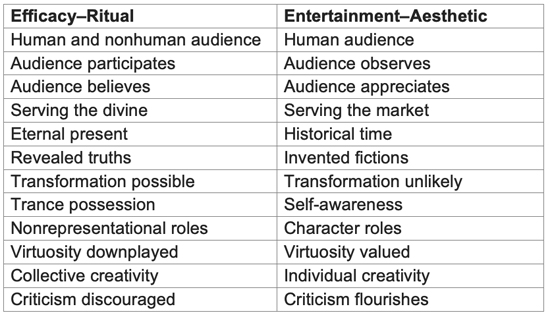
We no longer categorize the work we practice, perform, and produce as butoh. We do, however, still reference butoh in our theory and praxis. The Festival's primary inspiration derives from butoh's genesis in Tokyo's cabaret and underground avant-garde arts scene in the 1960's. During the day, Hijikata trained his dancers in exercises and techniques of the new dance genre he was inventing. At night the same dancers then experimented with bringing their exploration into the competitive marketplace of cabaret/burlesque.
This hand-in-glove development of high and low art forms is the impetus for our explorations into what we call Ritual Cabaret in our site-specific location in Coney Island.
Hijikata's avant-garde presentations were referred to as gishiki (ritual) in Japanese media reports at the time. Most butoh practitioners today would probably classify their performances closer to the ritual end of the ritual--entertainment spectrum. However, although sparsely documented, and dismissed by most butoh scholars, the cabaret performances by Hijikata's dancers are arguably as important to the development and dissemination of butoh internationally.
Over the course of our twenty-year study, we always asked the butoh masters in the workshops about the relationship between the performer and the audience in a butoh performance. That is, we understood intuitively the necessity for a guide or a witness within the process, but, as with other rituals, we never understood the necessity of an audience for butoh other than the "initiated" audience of fellow practitioners. We have never received a completely satisfactory answer but eventually reconciled the question personally for ourselves:
The audience and our performance reside in the liminal space
of the living and the dead and the Seventh Generation.
We have fused our butoh study with our thirty-five year history of producing at the arts organization Coney Island USA, whose mission is as follows:
"...exploring American popular culture through innovative exhibitions and performances... our approach is rooted in mass culture and the traditions of P.T. Barnum, dime museums, burlesque, circus sideshows, vaudeville, and Coney Island itself."
Below is an excerpt from a rich article "Performance and Ritual" that provides a nice breakdown of the Efficacy-Entertainment Dyad (continuum) we are exploring in refining and defining Ritual Cabaret. Below is an excerpt from a rich article "Performance and Ritual" that provides a nice breakdown of the Efficacy-Entertainment Dyad we are exploring in Ritual Cabaret.
The Efficacy-Entertainment Dyad
Ritual emphasizes efficacy or getting something done (e.g., a prayer answered, a god propitiated). Entertainment emphasizes the pleasurable and aesthetic qualities of a performance. One can depict the distinction between efficacious (ritual) performances and entertainment (aesthetic) performances as a binary:

And yet efficacy and entertainment are not opposites. Rather, they are dancing partners along a continuum connecting each of the above qualities. Ritual performances tend toward the efficacy end of the continuum, and aesthetic performances tend toward the entertainment end. But all ritual performances have some aesthetic qualities, and all aesthetic performances have some ritual qualities.